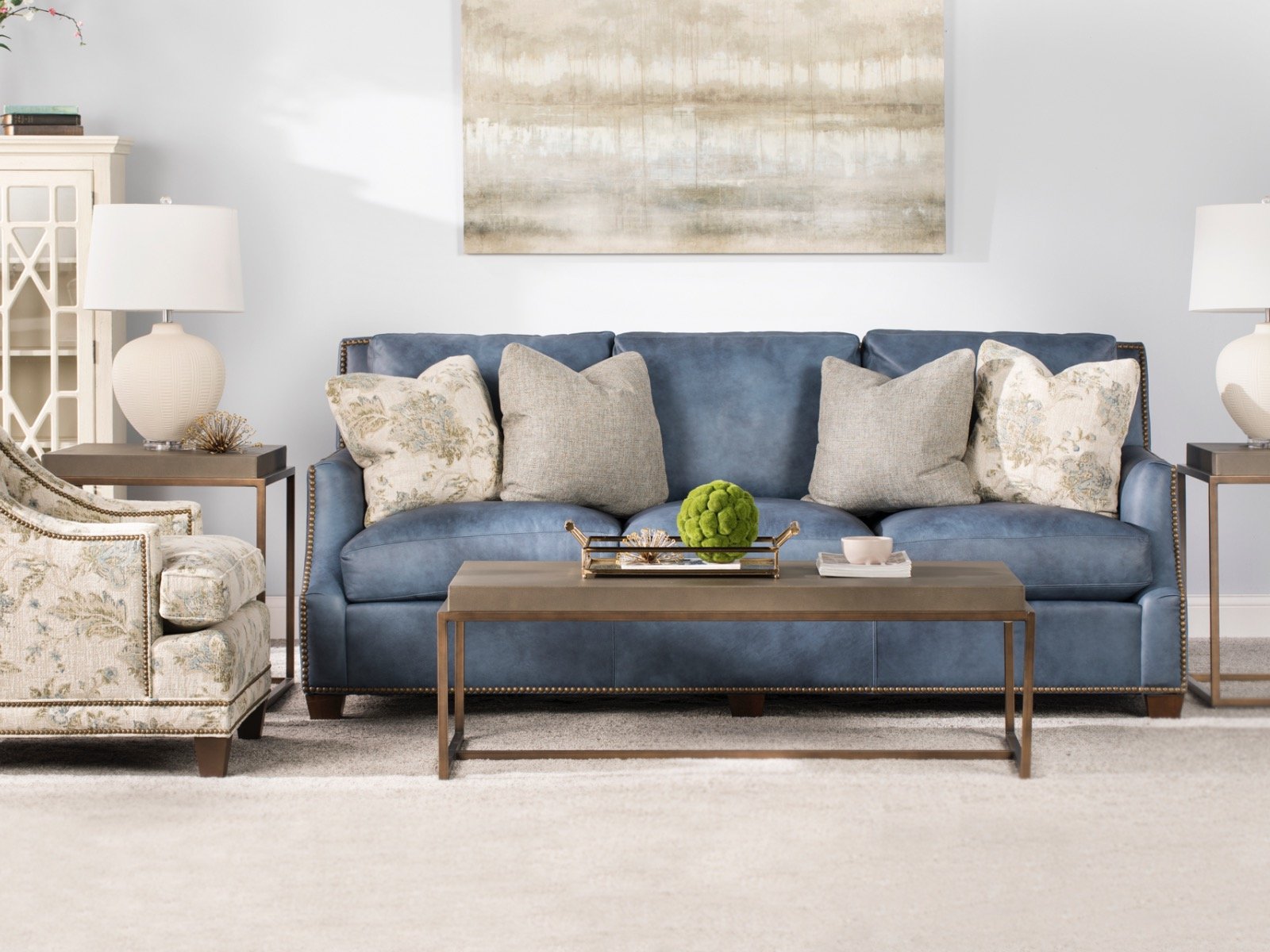At Steinhafels, we don’t just want to sell you a piece of furniture – we want to help you tell your story and feel like a million bucks in your home.
One of the ways we do that is through our interior design program, Decorating Solutions. Our interior designers and decorators are highly experienced in all aspects of design, including higher level concepts like creating a theme in your room and establishing a focal point.
Today’s article focuses on these two core concepts of design. Interior Designer Debbie Gray has been in the field for 30 years and was kind enough to lend her expertise to this article.
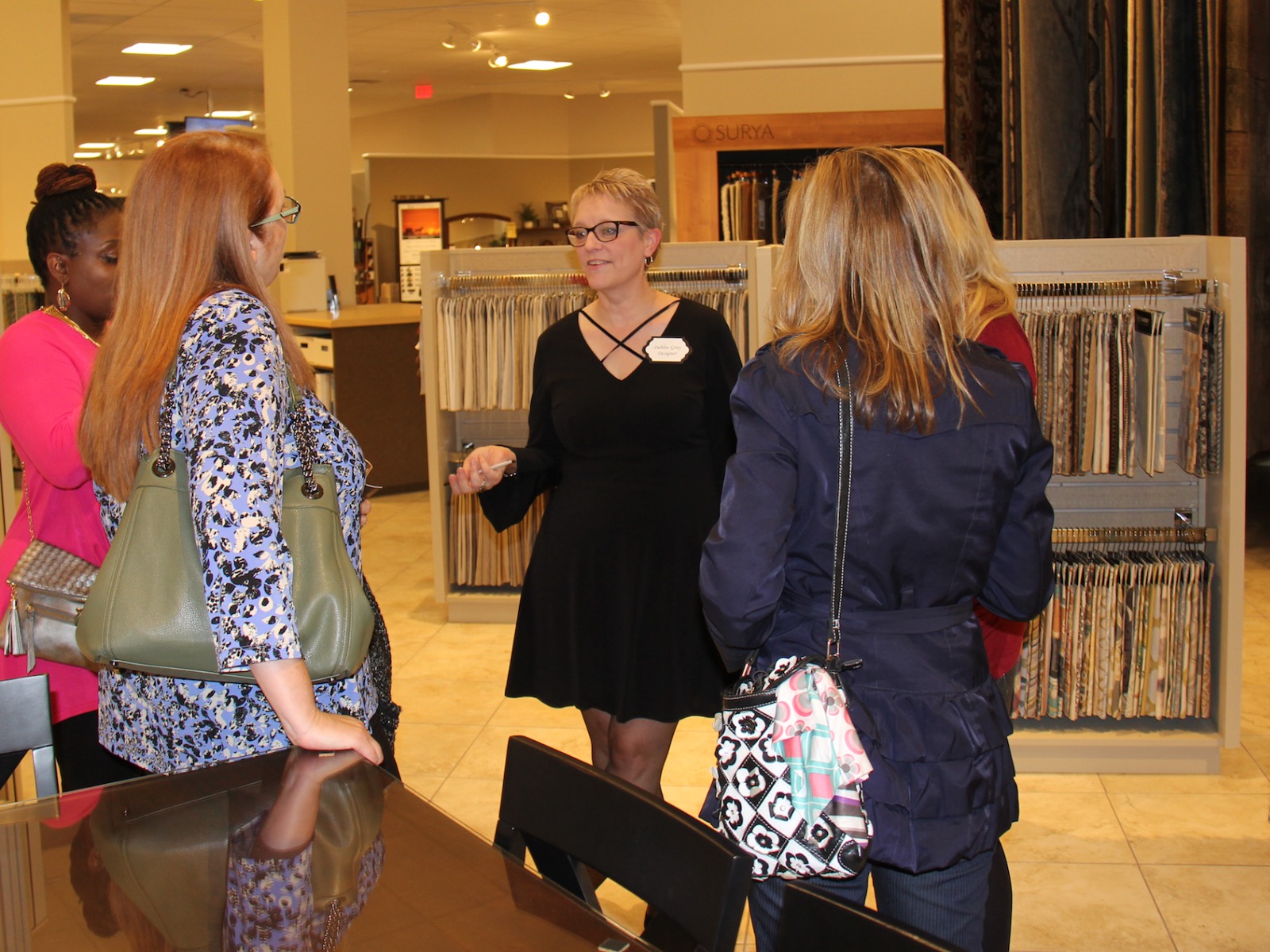
Debbie is based at our Madison East store on High Crossing Boulevard, just a little more than an hour west of Milwaukee. Debbie has been with Steinhafels for years, and is a wonderful resource to customers and a mentor to newer designers.
Using photographs supplied by our in-house photographer Sarah Utech, we are going to take you through some of Debbie’s tips for theme and focal point perfection!
Creating a theme in your room
There is a wide variety of design styles and trends that you can use to create a theme in your room – farmhouse, coastal, industrial, boho, etc. – but there are countless other ways to build a theme as well.
The "theme" for your space can also be built around your favorite color, a cherished piece of furniture or a special piece of artwork. If it means something to you or is a reflection of your personality and the things that you love, then it’s a great starting point for building the theme of a room.
Tips for creating a theme
1. Keep the major pieces of furniture in your room timeless or classic
These are the pieces that you invest the largest part of you budget in, like a sofa, sectional, dining set or bedroom set. Think of these pieces as the backdrop or canvas for building your theme. If you go timeless or neutral with these pieces, it will also be easy and less expensive to adapt or change the theme as trends or your tastes change.
 In this example, the theme is generally "blue."
In this example, the theme is generally "blue."
2. Avoid "too much of a good thing"
Don’t get carried away with your theme. Pick a couple pieces that support your theme, like a great cocktail table, a unique console table or chest, or a colorful accent chair. Accessories are also an easy way to carry the theme throughout the room – but again, don’t over do. Balance is the key! Mix themed accessories with non-themed items. Adopting this tip will keep the theme from taking over and allow the items that you do select to be special.
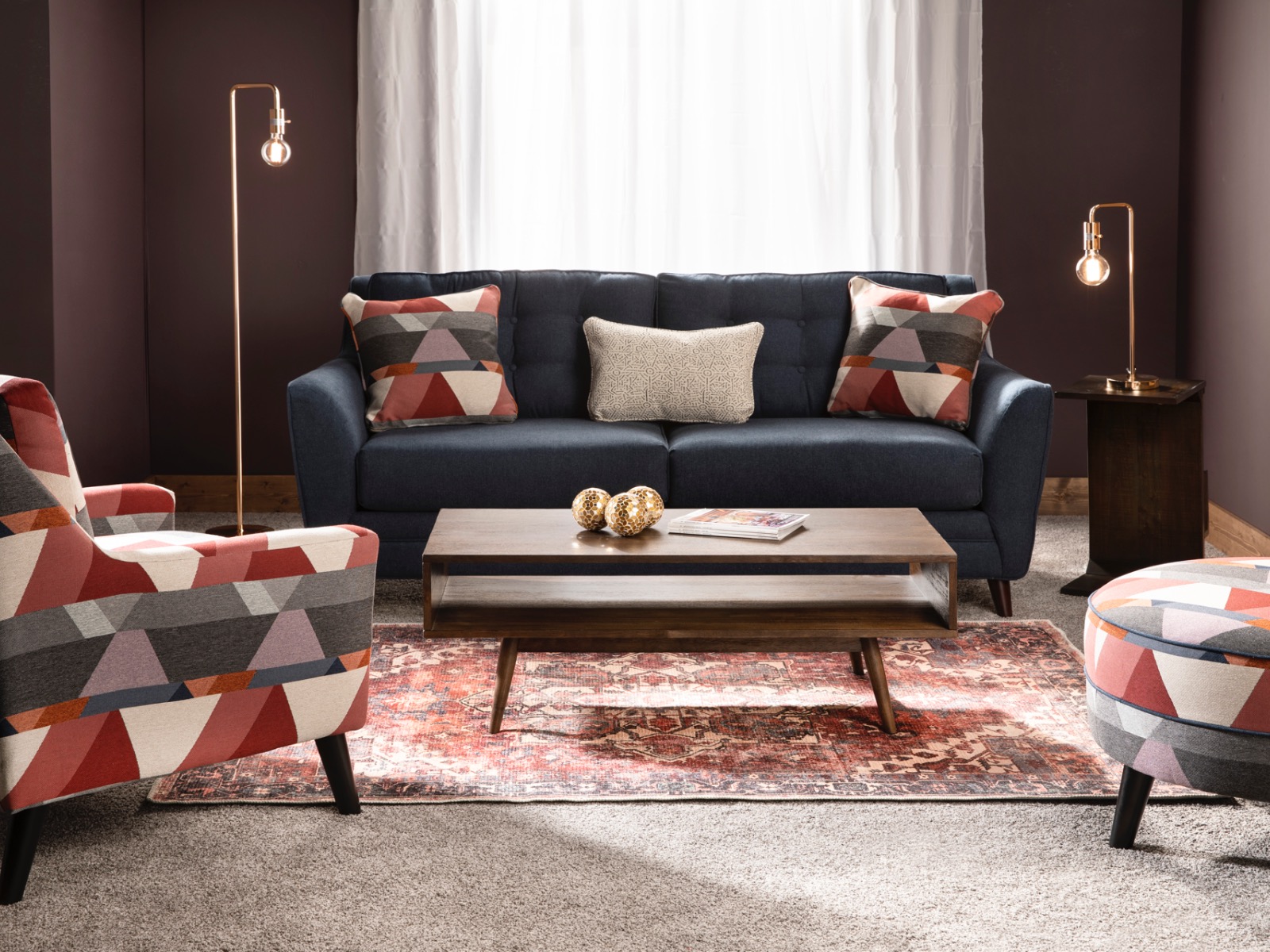 Retro modern (details to support the theme: geometric patterns, brass finishes,
Retro modern (details to support the theme: geometric patterns, brass finishes,
midcentury modern styled table)
3. Use color and texture to support your theme
This is another simple way to give a nod to the theme you are creating without getting "kitschy." For example, soft blues and greens and crisp neutrals support a coastal feeling while bright, bold colors support a boho theme. Texture works the same way; rustic woods lend themselves to a farmhouse feel, while a touch of metal adds to the industrial vibe.
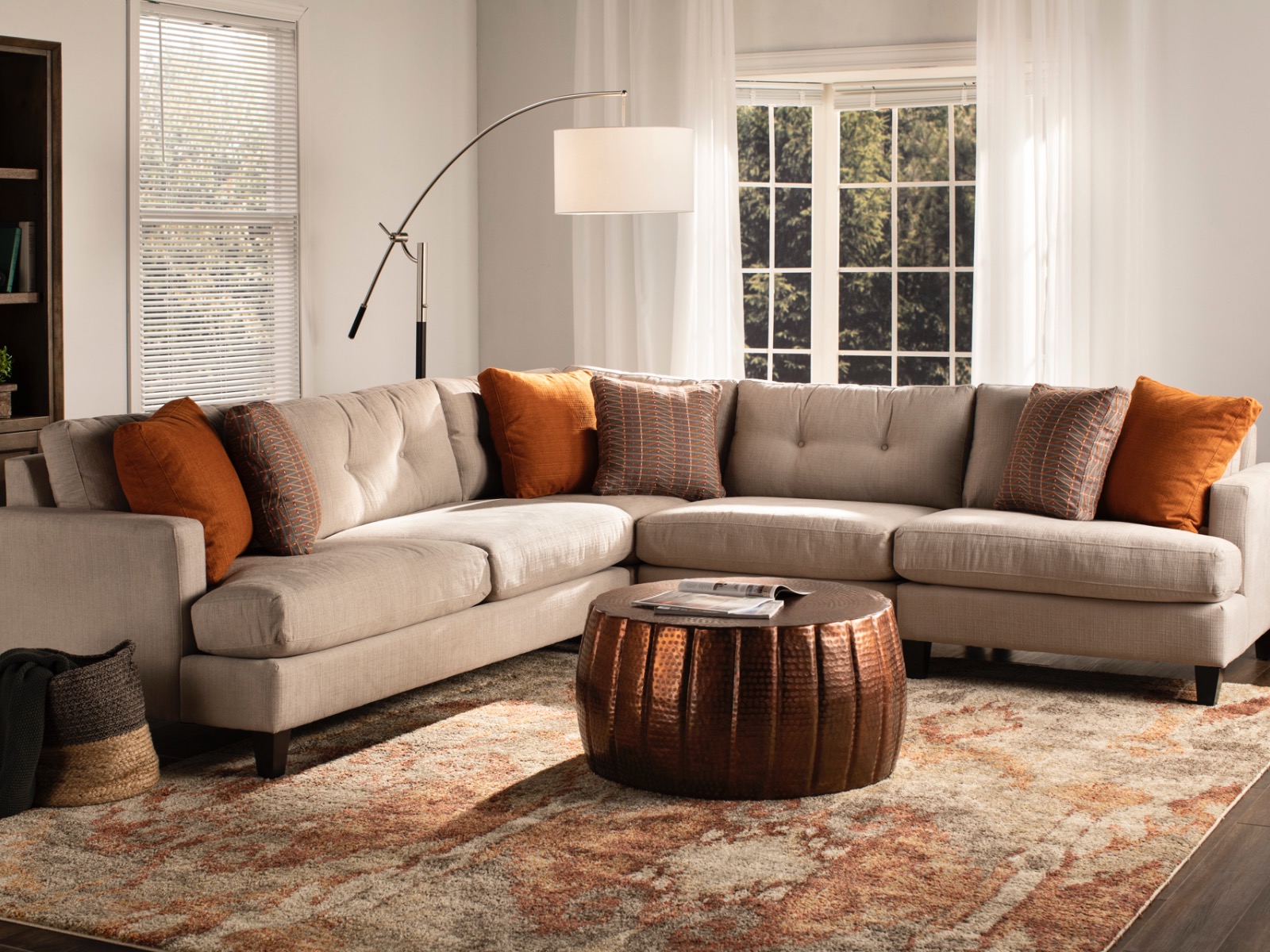 Fall is coming! Fall theme (details to support the theme: fall color palette, textured basket)
Fall is coming! Fall theme (details to support the theme: fall color palette, textured basket)
4. Make a statement with an area rug or lighting
Another great way to add to the feel you are creating in your room. Rugs and lamps are available in every style, color and price point.
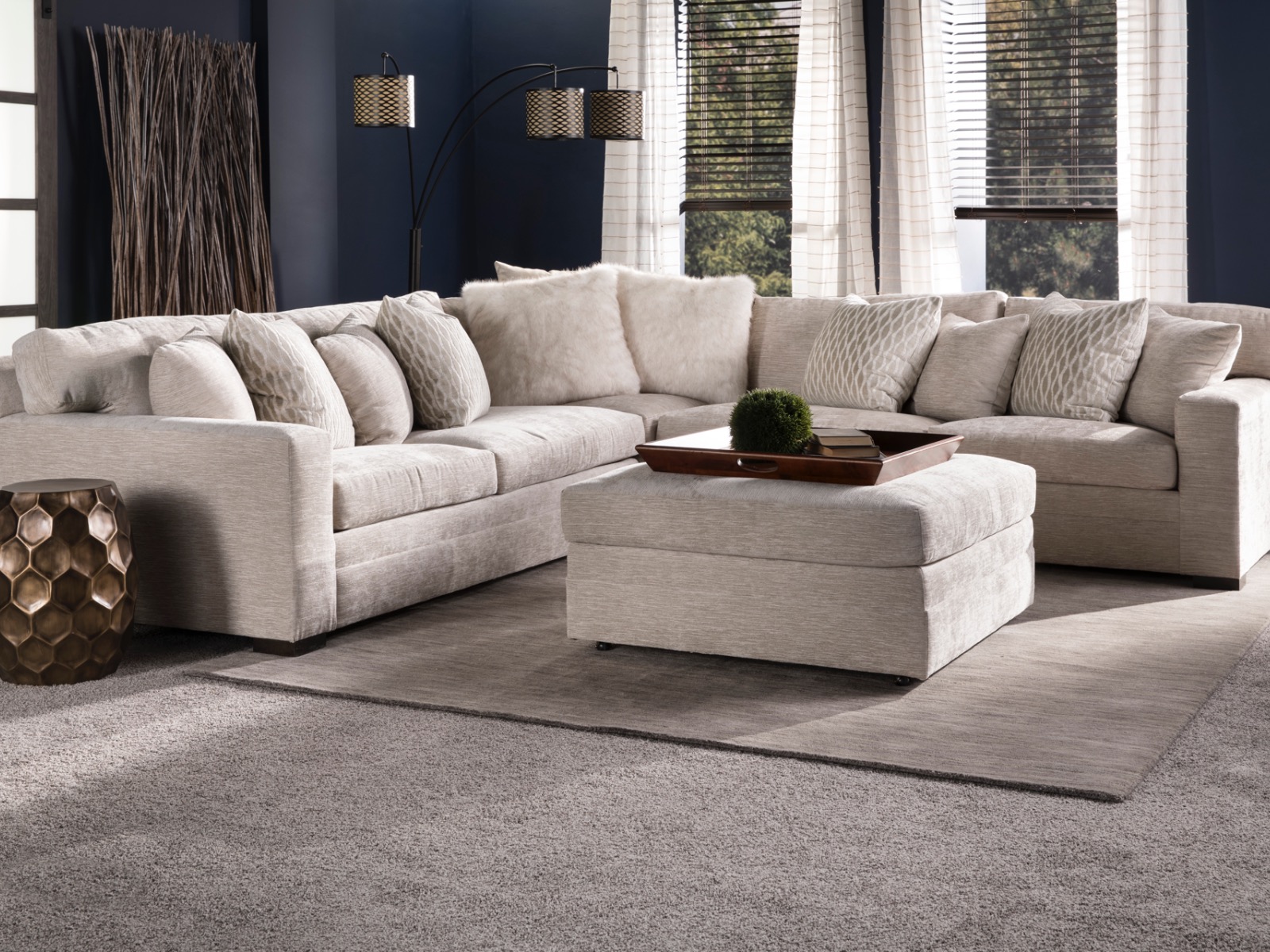 Theme is global/eclectic (details to support the theme: lots of textures, earth tones).
Theme is global/eclectic (details to support the theme: lots of textures, earth tones).
No focal point, no problem
The focal point is the first thing that you notice in a room. It’s the natural starting point when it comes to arranging furniture, and it also helps set the tone or mood of the space. The most common focal point is a fireplace – but what do you do when your room doesn’t have one or any other well-defined alternative?
Several ways to create a focal point
1. Use a large piece of furniture
An oversized armoire, cabinet or similar piece of furniture is a great focal point. If you create balance with artwork or plants on either side, you also create symmetry, making it easy to use as an anchor to build your room around.
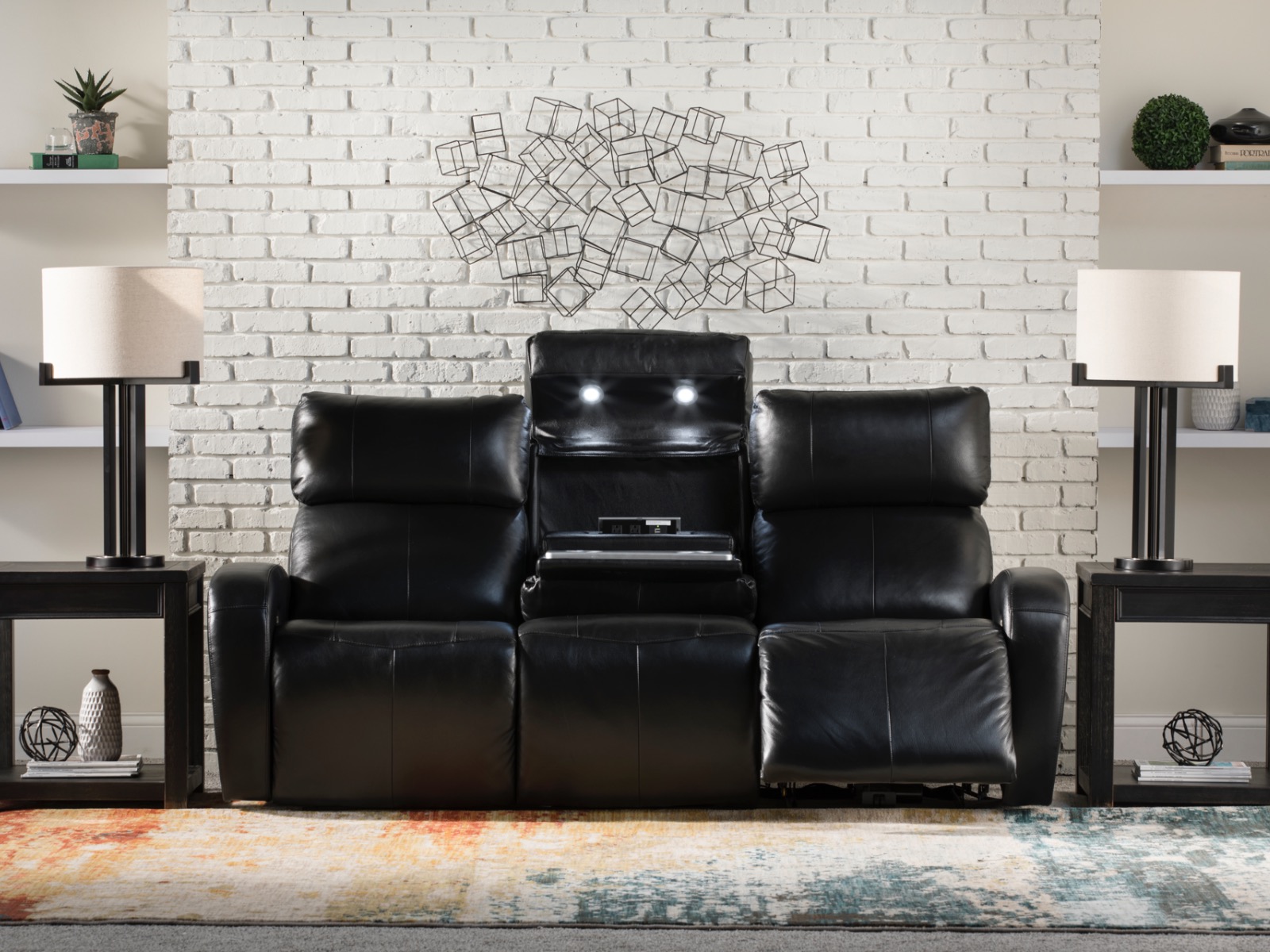 Focal point is the reclining sofa because it's so high; the contrast and the symmetry
Focal point is the reclining sofa because it's so high; the contrast and the symmetry
of the rest of the room draws your eye to the middle.
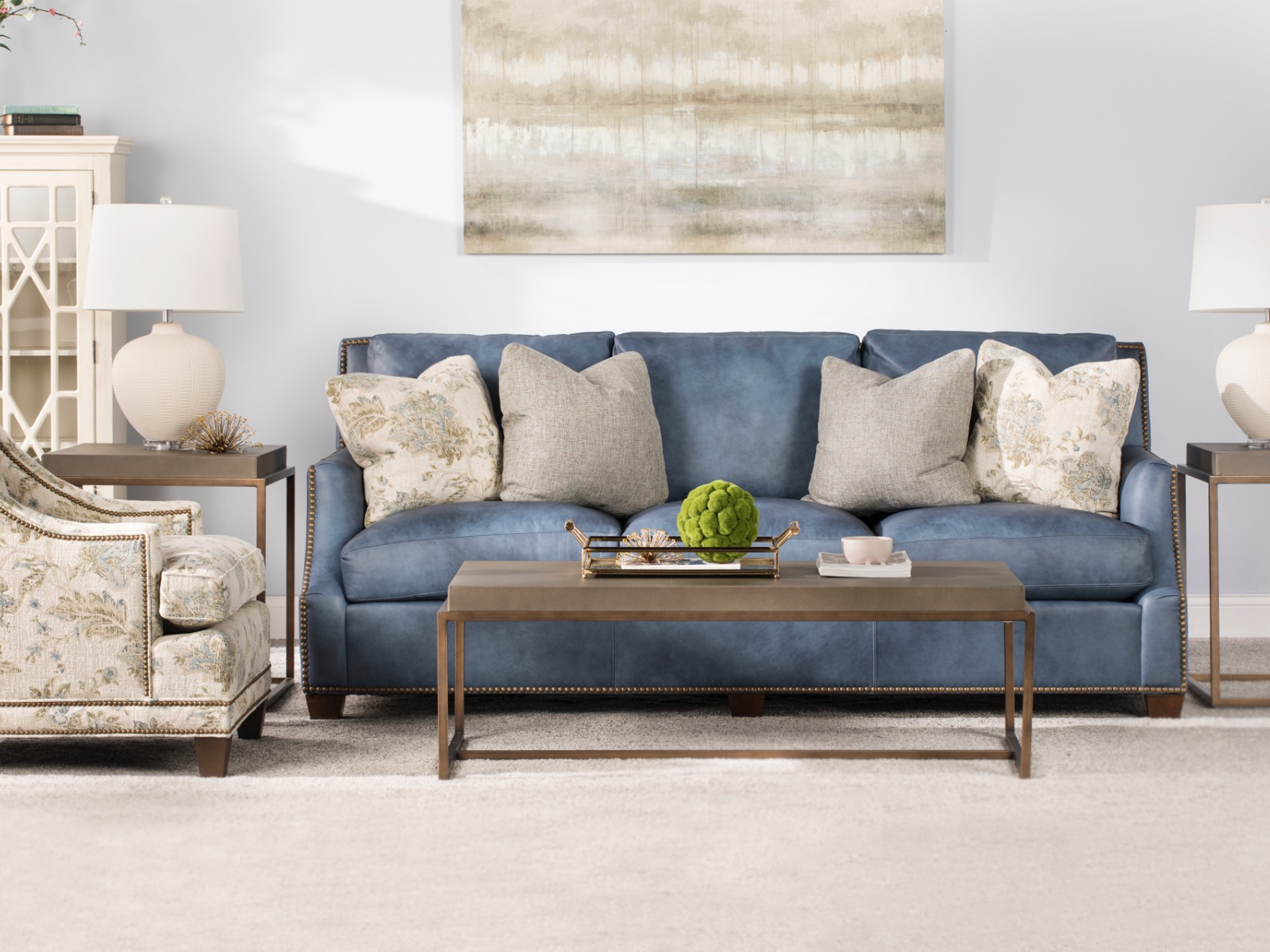 Focal point is the sofa because it's the pop of color in a neutral room.
Focal point is the sofa because it's the pop of color in a neutral room.
2. Use artwork or a gallery wall
These types of displays make for an eye-catching focal point. It’s also a great way to display a piece of artwork or photos that you enjoy, or mean something special to you.
3. Create an accent wall
You don’t need to use a piece of furniture to create your focal point! Consider painting a wall in an accent color, or add some wallpaper, wood or stone to give the room a special element.
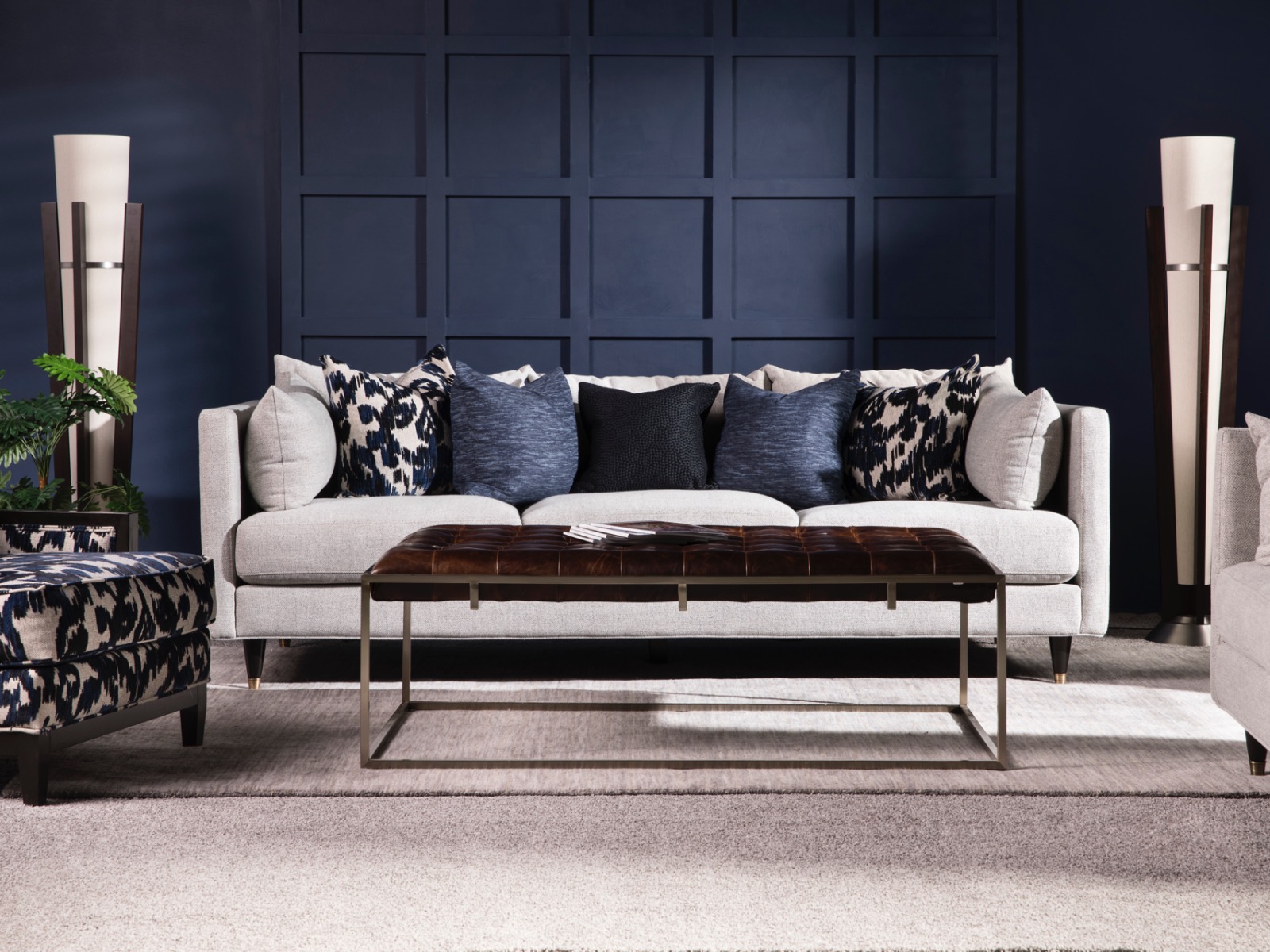 Focal point is the grid wall because it's a dramatic architectural feature.
Focal point is the grid wall because it's a dramatic architectural feature.
4. Look up
The focal point doesn’t need to be on a wall. While this is likely a more complicated option for most people, a fun wood treatment or color on the ceiling, maybe coupled with a great light fixture or fan, can also create a focal point in your room.
5. Use the TV
I know traditional design wisdom frowns on making the TV the focal point, but let’s be realistic: The TV is a part of virtually every room and used every day by most people. So why not make it look good in the space? There are so many interesting entertainment consoles and wall systems that it is easy to make the TV look amazing in a room. Combination TV console/electric fireplace units are also a great option as you get two-for-one with a single focal point.
Debbie’s final piece of advice for both creating themes and focal points: Be creative and inventive. The possibilities are endless!

